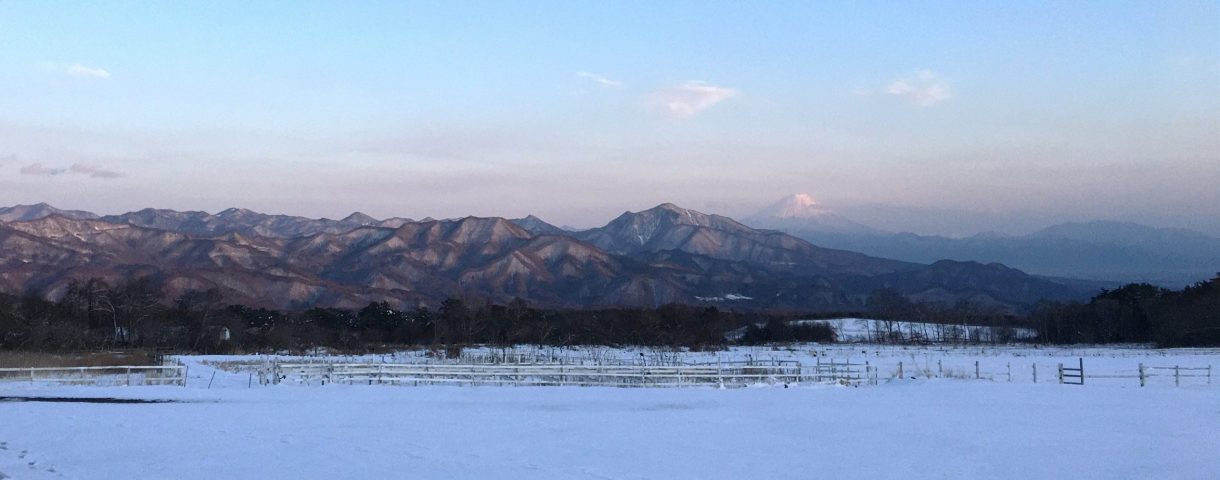Koshu-Hyakume (Diospyros kaki ) is an astringent persimmon variety which has been commonly used for Hoshigaki (Dried persimmons) and Anpogaki (Semi-dried persimmons) in Yamanashi Prefecture for a long time. The name of the variety derives from Hyakumomme. Hyaku is the Japanese word for 100 and the monme is the old Japanese unit of weight equivalent to 3.75 grams. A common persimmon fruit weighs about 200g; however, a Koshu-Hyakume fruit weighs about 375g. The sugar content of fresh persimmons is usually around 20%. To make Hoshigaki, first the pericarp (skin) of fresh persimmons is peeled and skinless persimmons are strung to hung from the eaves of a house to dry. After drying and removing the astringency of persimmons, the sugar content of the dried persimmons becomes about 70%.
Korogaki are hoshigski of Koshu-Hyakume persimmons. It takes about 45 days from harvesting to completing the drying process. The duration is about two times of those of other common persimmons. Peeled persimmons are hung from the eaves of a house for about three weeks. One week after drying, the water content of persimmons becomes about 50% and these are named Anpogaki which have jelly-like texture and are juicy. In order to make Korogaki, the drying process is continued further more than one month. When the water content of persimmons becomes about 20% and the sweetness is strengthened, these are named Korogaki. The cold and dry wind from the Minami-Alps mountains helps the drying process of persimmons. When the drying process is complete, the size of persimmons becomes about one third of the original one. By gentle-hand kneading (Temomi in Japanese), separating the seed from the pulp, the remaining water inside the fruit is dispersed entirely and the fruit is dried evenly. The next process is the rack-drying. Half-dried persimmons are put on racks with rice straw to dry them flat-shaped. The persimmons over the racks are turned over every three days. There is a hollow inside the straw which helps absorb the moisture. Once a dimple is formed in the fruit, the rack-drying process is complete. The dried persimmons are left inside the house for about two days. The pulp of the persimmons is shriveled and a frosty layer is formed on the surface. Hoshigai of these persimmons are called Korogaki.
https://en.wikipedia.org/wiki/Diospyros_kaki; https://en.wikipedia.org/wiki/Persimmon
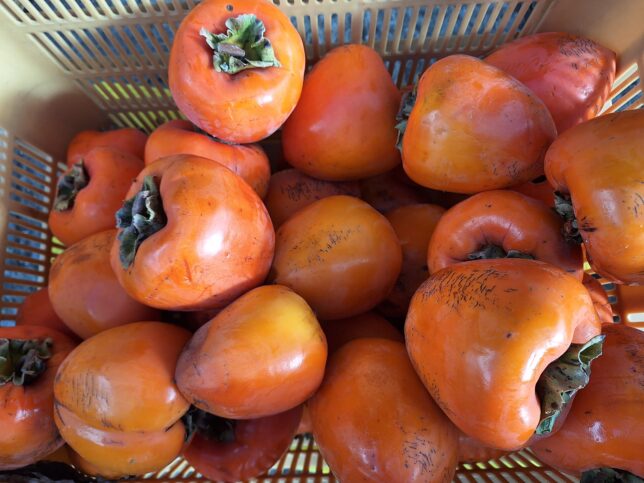
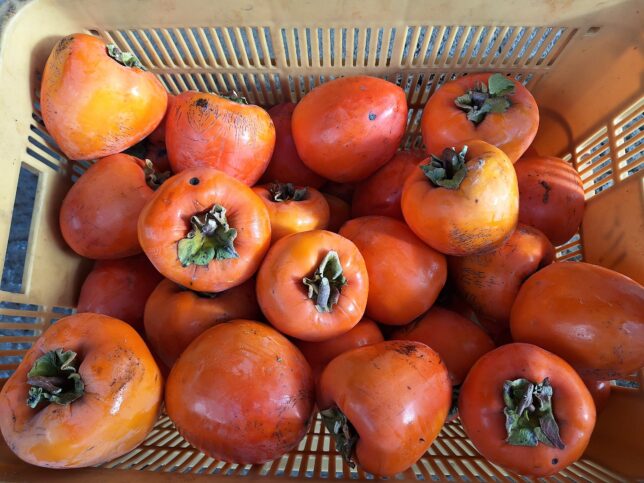
Koshu-Hyakume persimmons, Iwanami Farm, Enzan, Koshu, Yamanashi, 12/07/2024
https://ja.wikipedia.org/wiki/%E7%94%B2%E5%B7%9E%E7%99%BE%E7%9B%AE
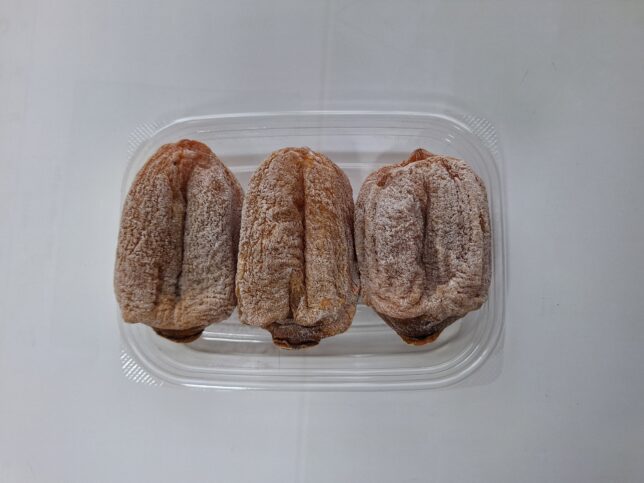
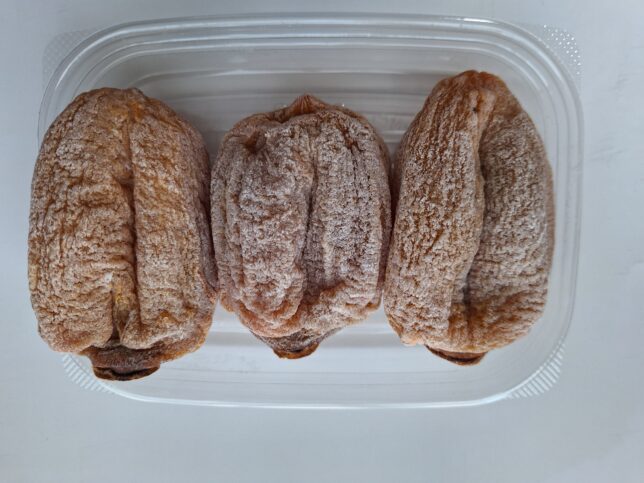
Korogaki (Koshu-Hyakume hoshigaki), Iwanami Farm, Enzan, Koshu, Yamanashi, 12/07/2024
https://en.wikipedia.org/wiki/Dried_persimmon; https://specialtyproduce.com/produce/Hyakume_Persimmons_6662.php
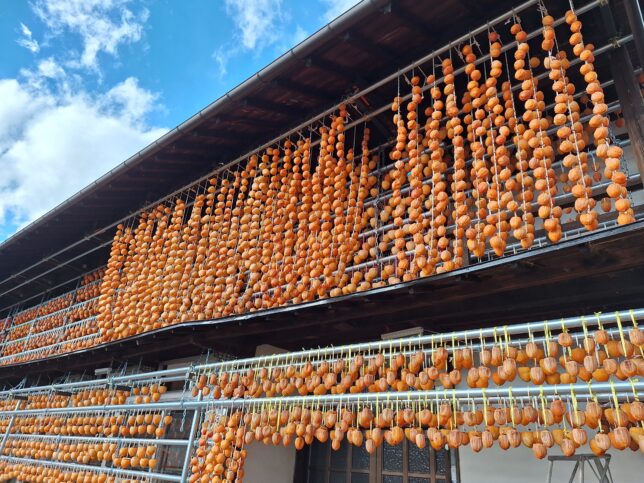
The pericarp (skin) of persimmons is peeled and skinless persimmons are strung to hung from the eaves of a house to dry.
Iwanami Farm, Enzan, Koshu, Yamanashi, 12/07/2024
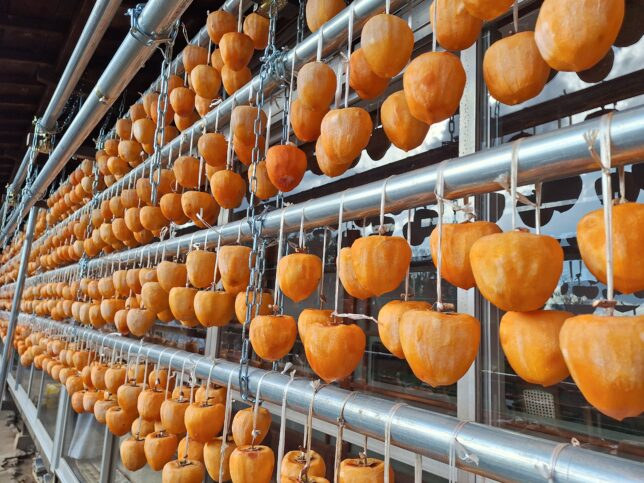
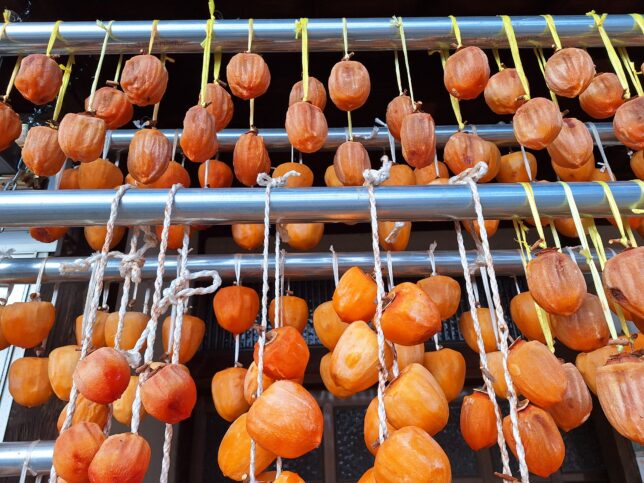
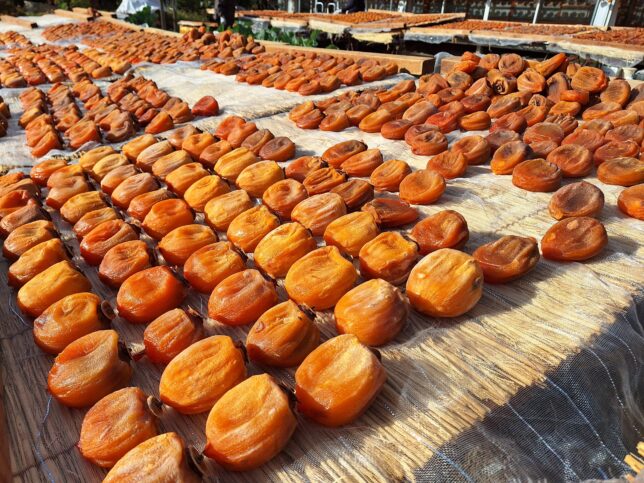
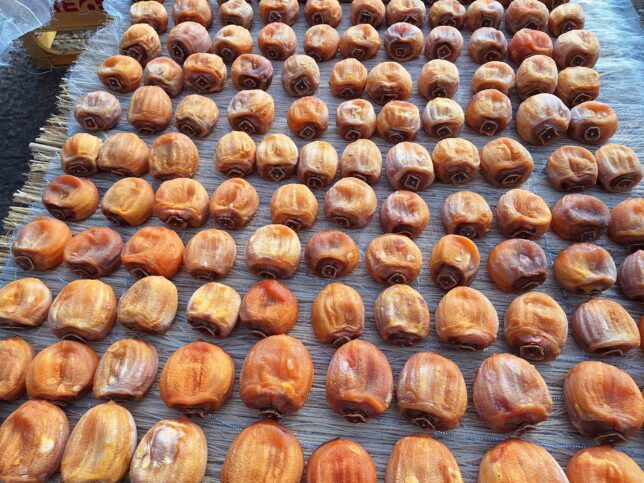
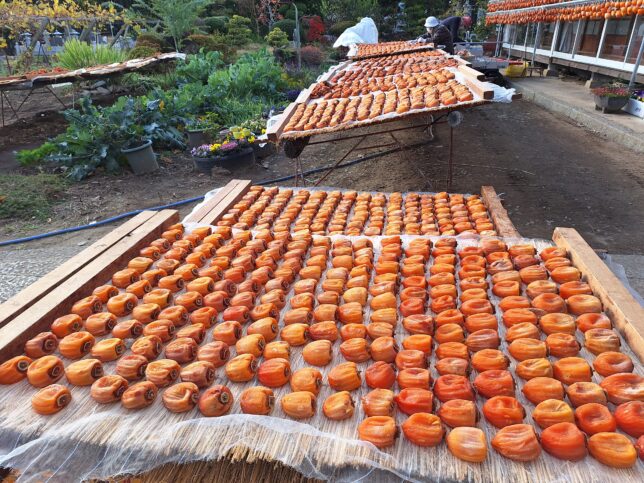
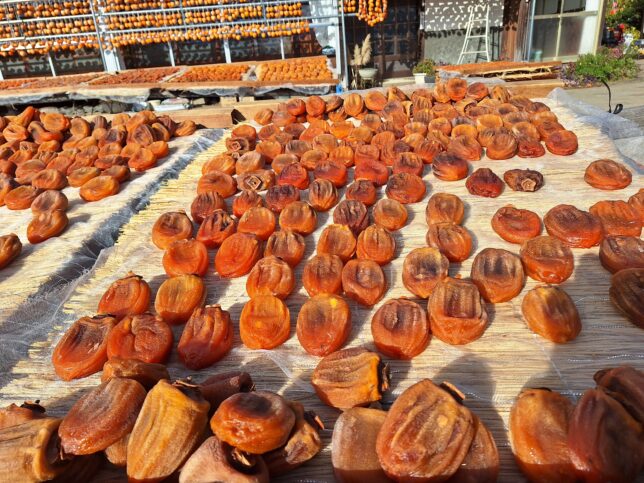
Drying Koshu-Hyakume persimmons, Iwanami Farm, Enzan, Koshu, Yamanashi, 12/07/2024
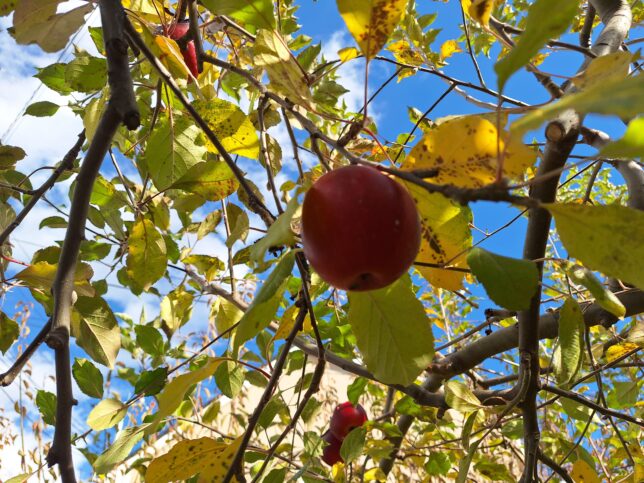
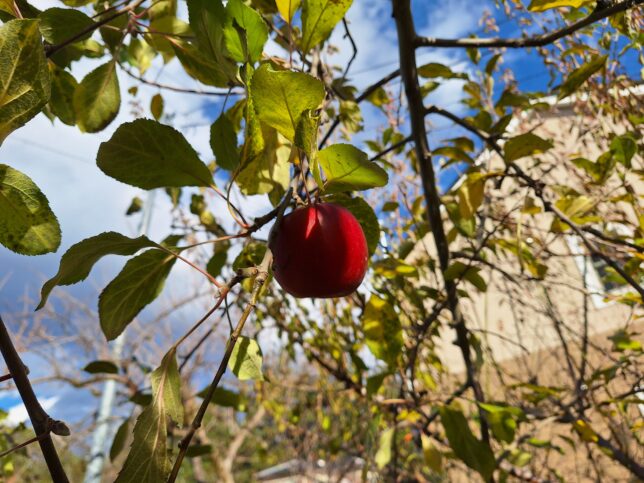
Apples (Malus domestica), Iwanami Farm, Enzan, Koshu, Yamanashi, 12/07/2024
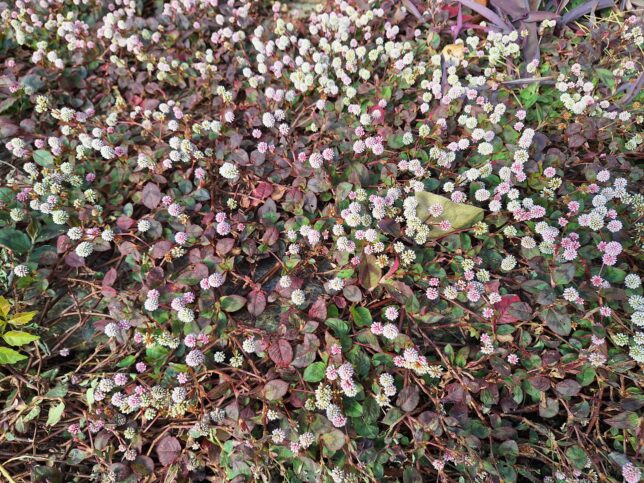
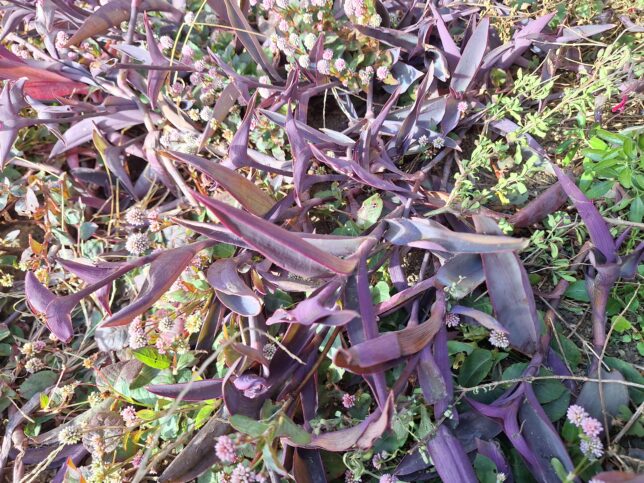
Smartweed (Persicaria capitata) and purple heart (Tradescantia pallida ‘Purpurea’), Iwanami Farm, Enzan, Koshu, Yamanashi, 12/07/2024
